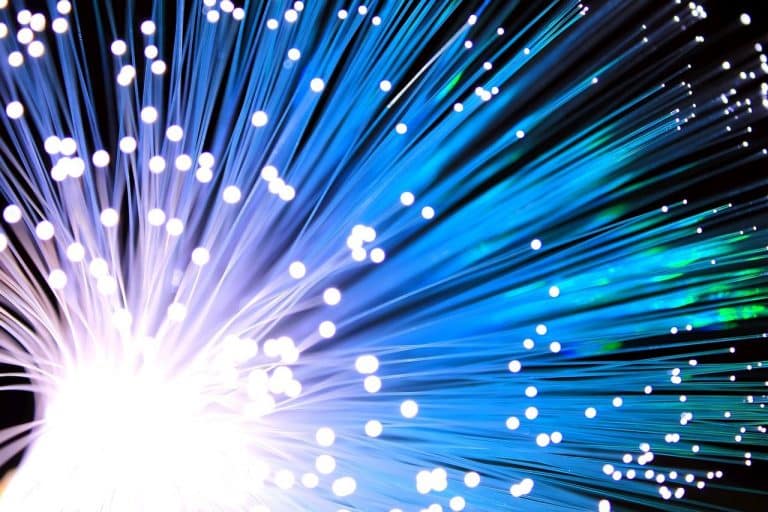Dark Fibre: Assume you were overjoyed when fibre-optic connectivity became a viable option for your firm and chose to go ahead and install substantial lines across it.
In the end, you’ll only need a handful and will be left wondering what to do with the rest.
“Dark fibre” refers to optical fibres that aren’t being used. In the dark, as opposed to optical fibres that send light pulses while carrying information, because the fibres are not lighted.
Individuals and businesses interested in setting up fibre-optic communication channels can purchase or lease dark fibre strands.
The term “dark fibre” has taken on new meaning throughout time. Fibre infrastructure that is not managed by large carriers is increasingly being used to lease fibre-optic lines from such providers. They are still referred to as “dark fibre” even though they are in use.
Also Read: What Is Surface Web And Deep Web?
How Do You Use Dark Fiber?
Dark fibre allows network providers to make sure they have an adequate supply of fibre optic cables on hand. Overestimating the amount of fibre optic cable needed is required to prevent having to bury new fibre networks if the number of customers increases.
The Best Ways to Set Up a Dark Fiber System
Point-to-point or point-to-multipoint networks are by far the most popular topologies for a dark fibre network, although there may be others. A wireless network in a single area can link to another network, or it can connect to many networks (point-to-multipoint).
Even though point-to-point networks are simpler to set up, point-to-multipoint networks provide at least three advantages over the former.
- Reduced implementation and maintenance expenses
- Increased installation versatility
- Enhanced safety and security thanks to a strong encoding
Dark Fiber Isn’t Necessary, So Why Build One?
While dark fibre networks can be beneficial to many enterprises, they aren’t all required to have one. A corporation in need of the following is a good candidate for using dark fibre:
- Connect several workplaces to a single corporate headquarters
- Establish safe remote working environments.
- Make sure each port has the same amount of upload and download bandwidth.
- Observe stringent security guidelines.
Who Stands to Gain from the Increased Consumption of Dark Fiber?
While the cost of dark fibre is accessible to the general public, companies who rely significantly on connection profit the most from it. Because they are distinct from their principal systems, dark fibre networks are preferred by the majority of businesses.
Owning and operating a fibre-optic network saves them money because they can take advantage of faster network speeds and avoid wasting bandwidth, which reduces their operational efficiency. To increase their network speed and capacity, companies merely need to upgrade their equipment when using dark fibre.
Considering the subterranean nature of dark fibre networks, many research and monitoring projects employ them, such as seismic study in California, Arctic permafrost investigations in Alaska, and other oceanographic studies.
Even though dark fibre was once viewed solely as a network provider’s cushion, it is now widely used since it aids enterprises in meeting the majority of their operational requirements.
Dark Fiber’s Drawbacks and Risks
However, like with everything else in life, there are drawbacks. Most importantly, anybody who uses dark fibre must be responsible for all aspects of the network’s operation, from setting it up to doing routine maintenance and troubleshooting.
Having an advanced workforce with high-level technical talents is critical for organizations looking to establish dark fibre networks. Dark fibre is worth the time and works it takes to produce, therefore it’s critical for any firm or individual considering it.
A black fibre network may be a realistic solution for large enterprises with extensive networks; but, if the network and data transfer are insufficiently large, the investment is not worthwhile. On-premise fibre-optic equipment would be the most expensive part of this equation.
Finally, the place matters. A dark fibre strand may only be connected if an organization or individual is in a location where there is an unused cable.

